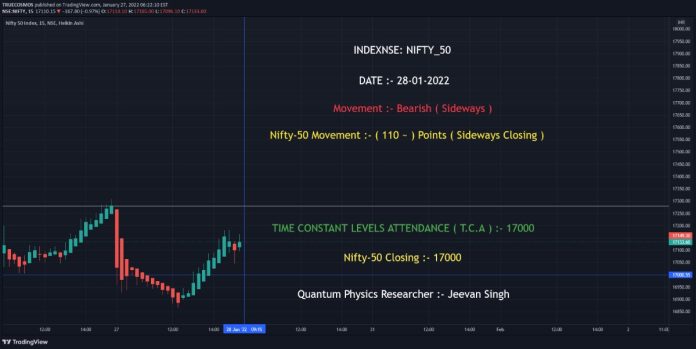The indexnse: nifty_50 is one of India’s most prominent stock market indices. It serves as a benchmark for tracking the overall performance of the National Stock Exchange (NSE) and reflects the financial health of India’s economy. Comprising the top 50 companies from various sectors, the index plays a crucial role for investors, traders, and policymakers in assessing market trends.
This article delves into the composition, calculation, importance, and factors influencing the indexnse: nifty_50, along with investment strategies and historical performance insights.
Table of Contents
What is indexnse: nifty_50?
The indexnse: nifty_50 was introduced by NSE Indices Ltd in 1996 and has since been a key indicator of market trends in India. It represents the 50 most liquid and large-cap stocks listed on the NSE, making it a reliable index for tracking market performance.
It is one of the two main benchmark indices in India, the other being SENSEX (which represents the Bombay Stock Exchange, BSE).
Key Features of indexnse: nifty_50
- Broad Market Representation – Covers 50 large companies across multiple industries.
- Sector Diversification – Includes banking, IT, FMCG, pharmaceuticals, energy, and more.
- Market Capitalization Weighted – Stocks are assigned weights based on their free-float market capitalization.
- Liquidity and Volatility – All included stocks are highly liquid, ensuring smooth trading.
- Regular Rebalancing – The index is reviewed twice a year to ensure relevance.
Indexnse: nifty_50 vs SENSEX
| Feature | indexnse: nifty_50 | SENSEX |
| Number of Stocks | 50 | 30 |
| Exchange | NSE | BSE |
| Base Year | 1995 | 1978-79 |
| Calculation Method | Free-float market capitalization | Free-float market capitalization |
How is indexnse: nifty_50 Calculated?
The indexnse: nifty_50 is computed using the free-float market capitalization-weighted method, meaning stocks with higher market caps have a larger influence on index movements.
Index Value=∑(Free-float market capitalization of 50 companies)Base Market Capitalization×Base Value (1000)\text{Index Value} = \frac{\sum (\text{Free-float market capitalization of 50 companies})}{\text{Base Market Capitalization}} \times \text{Base Value (1000)}Index Value=Base Market Capitalization∑(Free-float market capitalization of 50 companies)×Base Value (1000)
Top Constituents of indexnse: nifty_50 (as of 2024)
The indexnse: nifty_50 consists of companies from multiple industries. Some of the largest stocks by market cap include:
- Reliance Industries (Energy and Telecom)
- Tata Consultancy Services TCS (IT)
- HDFC Bank (Banking)
- Infosys (IT)
- ICICI Bank (Banking)
- Hindustan Unilever HUL (FMCG)
- Bajaj Finance (Financial Services)
Factors Affecting indexnse: nifty_50 Performance
Several factors impact the indexnse: nifty_50 movements
1 Economic Indicators
- GDP Growth – A strong economy leads to a rising stock market
- Inflation – High inflation can negatively affect corporate profits
- Interest Rates – RBI’s monetary policy decisions impact stock prices
2 Corporate Earnings
- Higher corporate profits boost investor confidence and push the index upward
3 Global Market Trends
- US stock markets Dow Jones Nasdaq S and P 500 influence Indian indices
- Geopolitical events wars trade agreements oil prices can cause volatility
4 Foreign Institutional Investments FII and Domestic Institutional Investments DII
- Higher FII inflows strengthen the market while outflows cause declines
5 Rupee Movement
- A weaker rupee makes imports costlier affecting sectors like oil and gas
- A stronger rupee benefits IT and pharma exports
Historical Performance of indexnse: nifty_50
1 Performance Over the Years
- 1996 – indexnse: nifty_50 launched with a base value of 1000 points
- 2000-2008 – Rapid growth before the 2008 financial crisis
- 2014-2019 – Strong bull run under economic reforms and global liquidity
- 2020 – COVID-19 crash in March below 8000, followed by a sharp recovery
- 2021-2023 – indexnse: nifty_50 crosses 18000 plus points, reaching record highs
Investment Strategies for indexnse: nifty_50
indexnse: nifty_50 is used by investors for various strategies
1 Investing in indexnse: nifty_50 Index Funds and ETFs
- Best for passive investors who want to track the index performance
- Examples – Nippon India Nifty 50 ETF SBI Nifty 50 ETF HDFC Index Nifty 50 Fund
2 Trading indexnse: nifty_50 Derivatives Futures and Options
- Popular among day traders and hedge funds
- Used for hedging and speculation in the stock market
3 SIP in indexnse: nifty_50 based Mutual Funds
- Systematic Investment Plans SIP allow investors to enter the market gradually
- Helps in rupee cost averaging and reducing volatility risks
4 Investing in indexnse: nifty_50 Stocks Individually
- Buying fundamentally strong indexnse: nifty_50 companies can generate good long term returns
Why is indexnse: nifty_50 Important?
- Benchmark for Mutual Funds – Many large-cap mutual funds use indexnse: nifty_50 as their benchmark
- Key Economic Indicator – Reflects the overall health of the Indian economy
- Used in International Markets – Attracts foreign investment due to its stability
- Provides Market Trends and Sentiment – Helps investors in decision making
Conclusion
The indexnse: nifty_50 is more than just a stock index—it is a reflection of India’s economic growth and financial stability. It offers investors a solid benchmark trading opportunities and insights into market trends
Whether you’re an investor trader or financial analyst, tracking indexnse: nifty_50 can help you make informed decisions in the ever-changing stock market

